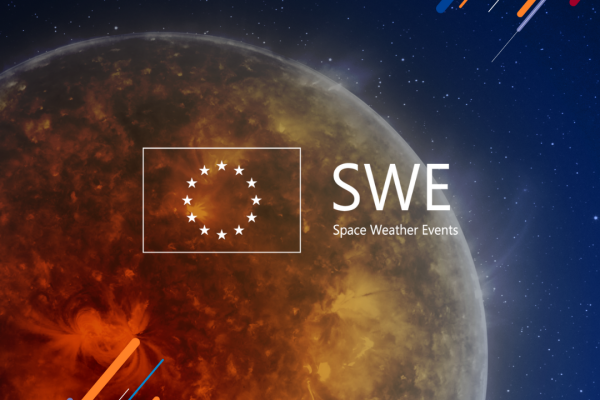Why is this relevant?
The number of satellites and debris in space is steadily increasing due to new developments in reusable launch vehicles, small satellites, and a growing number of private and public actors. The resulting congestion in space puts the security and resilience of EU and Member States space assets at risk: According to some estimates, more than 1 million pieces of debris larger than 1 cm are currently orbiting the Earth, in addition to an increasing number of satellites, with more than 50 000 additional satellites expected to be launched over the next decade. The likelihood of a satellite being severely damaged or destroyed in a collision is therefore expected to increase dramatically if no action is taken.
Definition of Space Traffic Management (STM)
STM encompasses the means and the rules to access, conduct activities in, and return from outer space safely, sustainably, and securely.
What is STM?
In light of an increasingly congested space, there is a compelling need to act in order to maintain space as a resource for future generations. STM therefore aims at keeping space operations safe, space orbits usable, and space accessible for decades to come while ensuring and further fostering the competitiveness of the EU industry.
To this end, the EU approach to Space Traffic Management proposed by the Commission and the High Representative of the Union for Foreign Affairs and Security Policy (HR/VP) aims at enhancing capabilities, norms and engagement while preserving EU interests in line with the respective competencies of the Union and its Member States. It calls for an EU contribution to this global challenge along four key lines of action:
- Assessing STM requirements and impacts for the EU: A consultation mechanism will gather civilian and military STM requirements of relevant EU partners.
- Enhancing operational EU SST capabilities to support STM: As the operational pillar of the EU STM approach, the EU SST subcomponent will further improve the performance of existing EU SST services, develop additional SST services, explore, and use new technologies, and engage with the EU industrial ecosystem.
- Fostering STM regulatory aspects: Regulatory aspects of STM will comprise non-binding measures (e.g., standards and guidelines) and binding obligations (e.g., legislation) at Union level; positive incentive measures will aim at incentivising the use of guidelines and standards by EU operators.
- Promoting the EU STM approach at a global level: The EU STM approach aims at contributing to a global endeavour by promoting a multilateral STM, fostering regional STM contributions to a global effort, and engaging in dialogues with strategic partners.
The Council of the EU and the European Parliament underlined the importance of and voiced their support for the EU approach on Space Traffic Management in relevant Council Conclusions and EP Resolutions.
The EU approach on STM is implemented with the help of the STM Stakeholder Mechanism. Mirroring the four avenues of the Joint Communication, the STM Stakeholder Mechanism brings together the fora called for in the Joint Communication into one comprehensive structure.
What is the EU Industry and Start-ups Forum (EISF)?
To perform STM activities, it is necessary to be able to observe space traffic continuously. EU SST with its network of sensors and capabilities therefore constitutes the operational pillar for the EU STM approach.
In addition, fostering the innovation and competitiveness of the EU SST commercial sector is central in achieving a higher level of EU strategic autonomy and in supporting the rapidly increasing development of new SST services. As the operational pillar for the EU STM approach, EU SST therefore also supports the development of EU industrial capabilities to further improve and consolidate the autonomy of EU SST in all orbit regimes beyond the network of existing national assets.
To this end, the Commission launched together with the EU SST Partnership the European Union Industry and Start-ups Forum on STM (EISF), a discussion forum where EU stakeholders jointly define research and development priorities. These priorities are funded by tendering more than 80% of the available EU SST budget to EU industry.
The EISF is co-chaired by the EU SST Partnership and the Commission and gathers more than 150 members from more than 70 EU companies including startups, SMEs, midcaps and major actors. The EISF is organised into three working groups:
- Commercial Data Provision
- Development of innovative commercial sensors and value chain
- Services
To learn more about or to join the EISF, check out the EISF one-pager or contact DEFIS-EUSST-INDUSTRYFORUM ec [dot] europa [dot] eu (DEFIS-EUSST-INDUSTRYFORUM[at]ec[dot]europa[dot]eu).
ec [dot] europa [dot] eu (DEFIS-EUSST-INDUSTRYFORUM[at]ec[dot]europa[dot]eu).
To find out about previous meetings, go to Space Traffic Management stakeholder mechanism (europa.eu) and navigate to subgroup 2.
Joint Communication: An EU Approach for Space Traffic Management
Fair and sustainable use of space (Council Conclusions of Swedish Presidency (2023))
EU approach to space traffic management (Council Conclusions of French Presidency (2022))
An EU approach for Space Traffic Management (European Parliament Resolution (2022))





